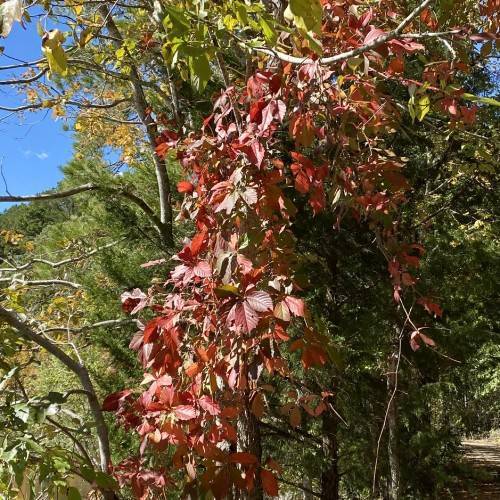
Virginia creeper
Parthenocissus quinquefolia
Cycle:
Perennial
Watering:
Minimum
Hardiness Zone:
3 - 9
Flowers:
Flowers
Sun:
Full sun,part shade
Soil:
Sandy Loamy Clay Rocky
Fruits:
Fruits In Summer Ready In Fall
Leaf:
Yes
Growth Rate:
High
Maintenance:
Moderate
Drought Tolerant:
Yes
Invasive:
Yes
Care Level:
Medium
watering
Virginia creeper plants require regular watering, about once per week, to remain healthy. When watering Virginia creeper, it is important to ensure that the soil in the container is moist but not soggy, as this will increase the risk of root rot. To water your Virginia creeper correctly, give the soil a thorough soaking and then allow the top inch to dry out before watering again. It is also important to check the soil throughout the growing season and water more frequently during periods of heat and drought. When caring for Virginia creeper plants, you can also give them an occasional misting with water to keep the foliage looking healthy.
sunlight
Virginia creeper (Parthenocissus quinquefolia) is a vigorous and hardy climbing vine that typically grows best in full sunlight, which allows it to flower and produce fruit. Generally, Virginia creeper will do best when exposed to at least 4 hours of sunlight per day but can tolerate less with adequate supplemental water. In locations receiving less direct sunlight, Virginia creeper can thrive with morning sun and bright, indirect light during the afternoon. Plants grown in areas with less sunlight will typically grow more slowly and take on a more trailing form, and may not flower or produce fruit.
pruning
Virginia creeper can be pruned in late winter or early spring. It responds well to regular pruning, and for this species, it is recommended to prune back 1 third of the plant each year. When pruning Virginia creeper, it is important to take care of the plant's natural shape and habit, and it is often better to prune stems individually rather than to prune entire sections of the plant off. In the early spring, Virginia creeper should be pruned to minimize the risk of disease and damage, as well as to encourage new growth.
